Stop Planting Boxwood Shrubs: Rescue Your Yard With Inkberry Holly

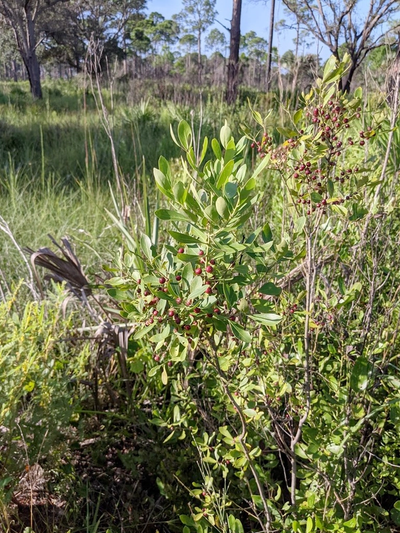
Boxwood shrubs suffer from pests and disease—Inkberry Holly doesn’t. Upgrade your yard with this native, resilient, and beautiful alternative. Learn more about Inkberry Holly, including its benefits, growing conditions, and care tips, in My Home Park’s detailed plant glossary. Explore how this versatile shrub can transform your landscape into a thriving, sustainable space.
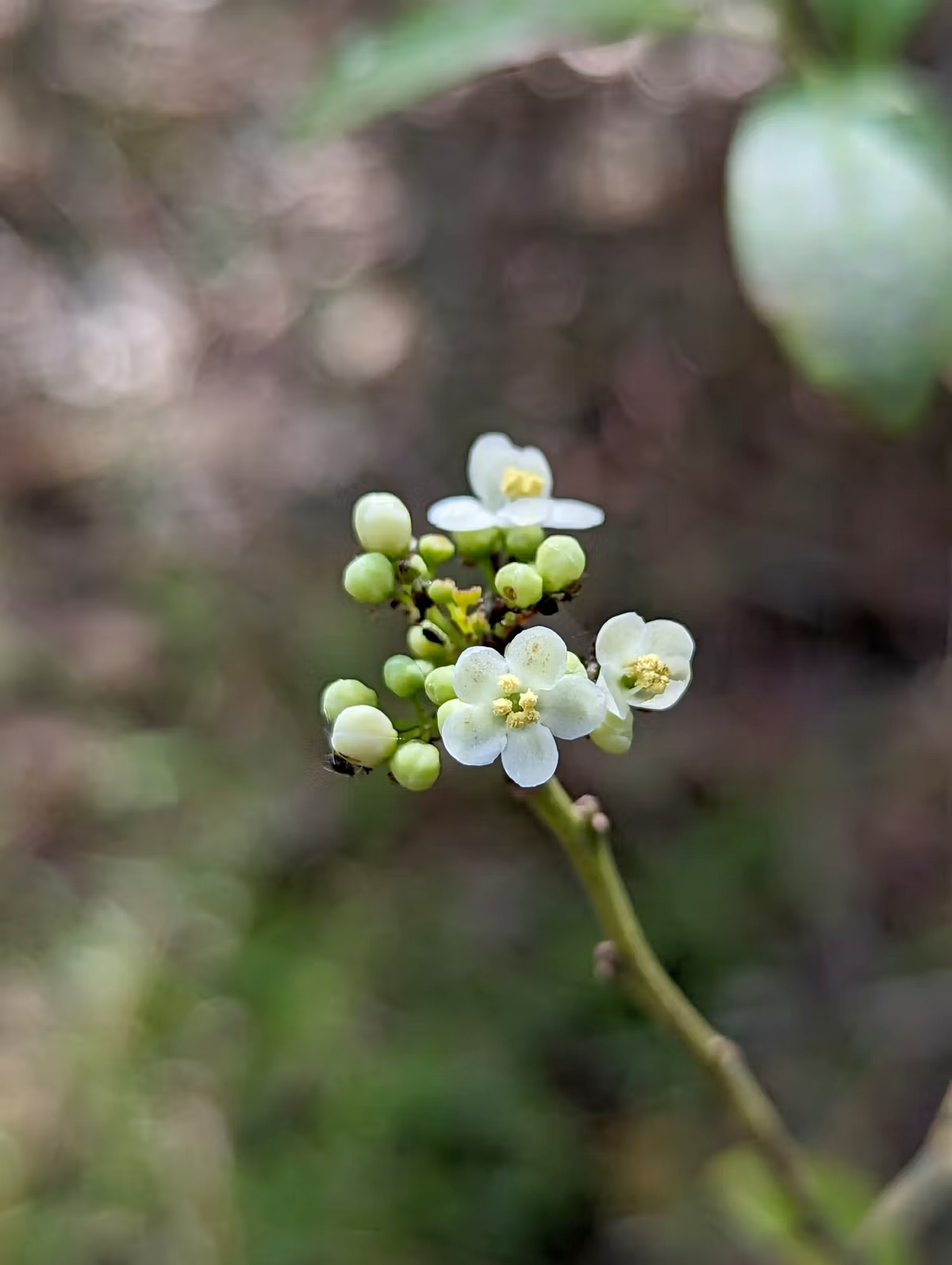
It’s time to move beyond the uniform landscapes of the 1950s and bring more resilience and ecological value to your yard. Boxwoods—imported from Europe, including the popular English boxwood—became a staple in post-war housing developments, helping to create the tidy, suburban look we still recognize today. While boxwoods have served their purpose, native plants offer a stronger, more sustainable alternative. They’re better adapted to local conditions, naturally deer-resistant, and provide essential support for pollinators and local ecosystems. A native replacement isn’t just an upgrade—it’s a smart, forward-thinking choice for a healthier landscape.
The Problem with Boxwood Shrubs
Boxwood varieties have long been a favorite for residential home gardening, but they come with a variety of problems that can make them more trouble than they’re worth.
Boxwoods are vulnerable to several pests, including the invasive box tree moth. Originally from East Asia, this moth has migrated to Europe and North America, where it poses a serious threat. Its larvae feed aggressively on boxwood leaves and young shoots, often leading to severe defoliation and weakening the plant, making it more susceptible to disease and environmental stress.
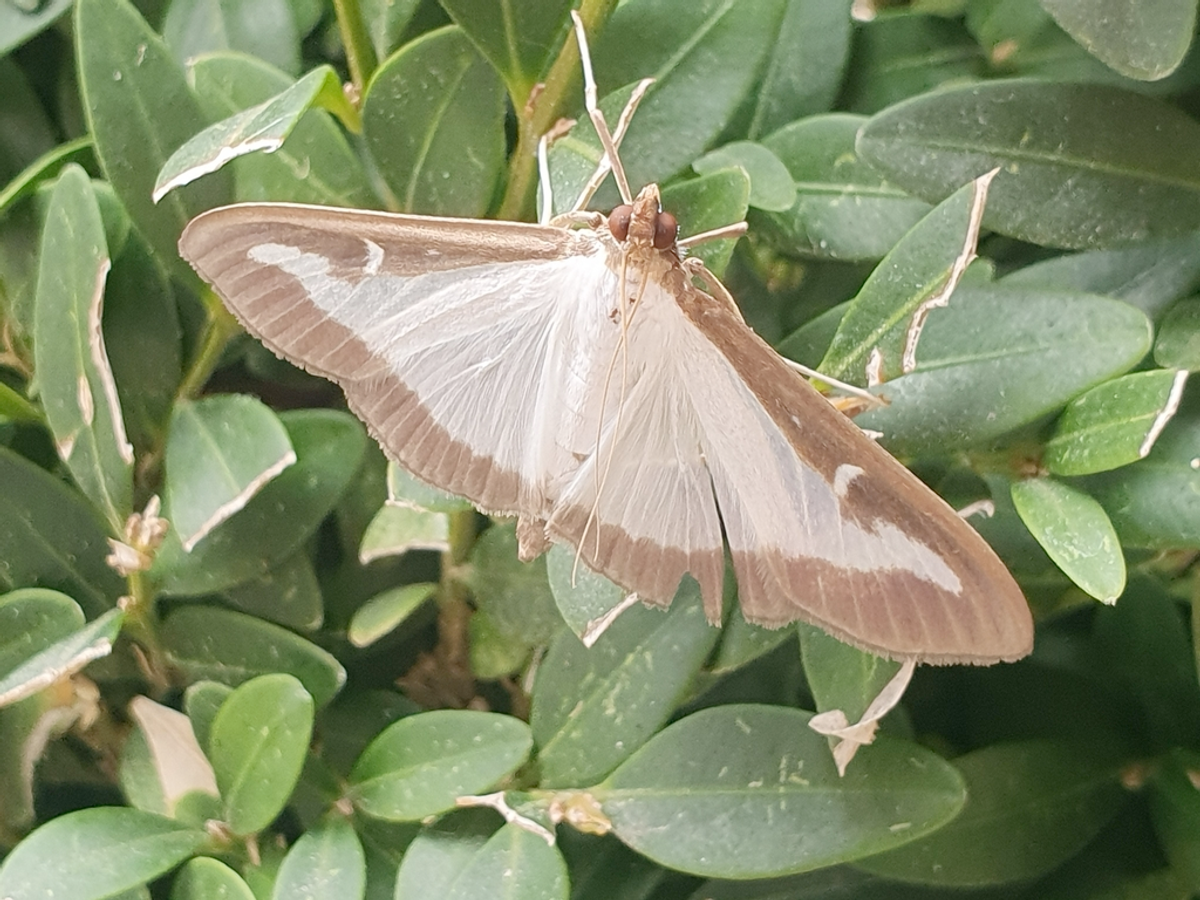
Boxwood blight is a destructive fungal disease that poses a significant threat to boxwood plants. It spreads rapidly through infected material, soil, and contaminated tools, causing leaf spots, stem lesions, and severe defoliation that often leads to death. Once infected, there is no cure. Its fast transmission and high mortality rate make boxwood blight a serious concern for landscapers and gardeners.
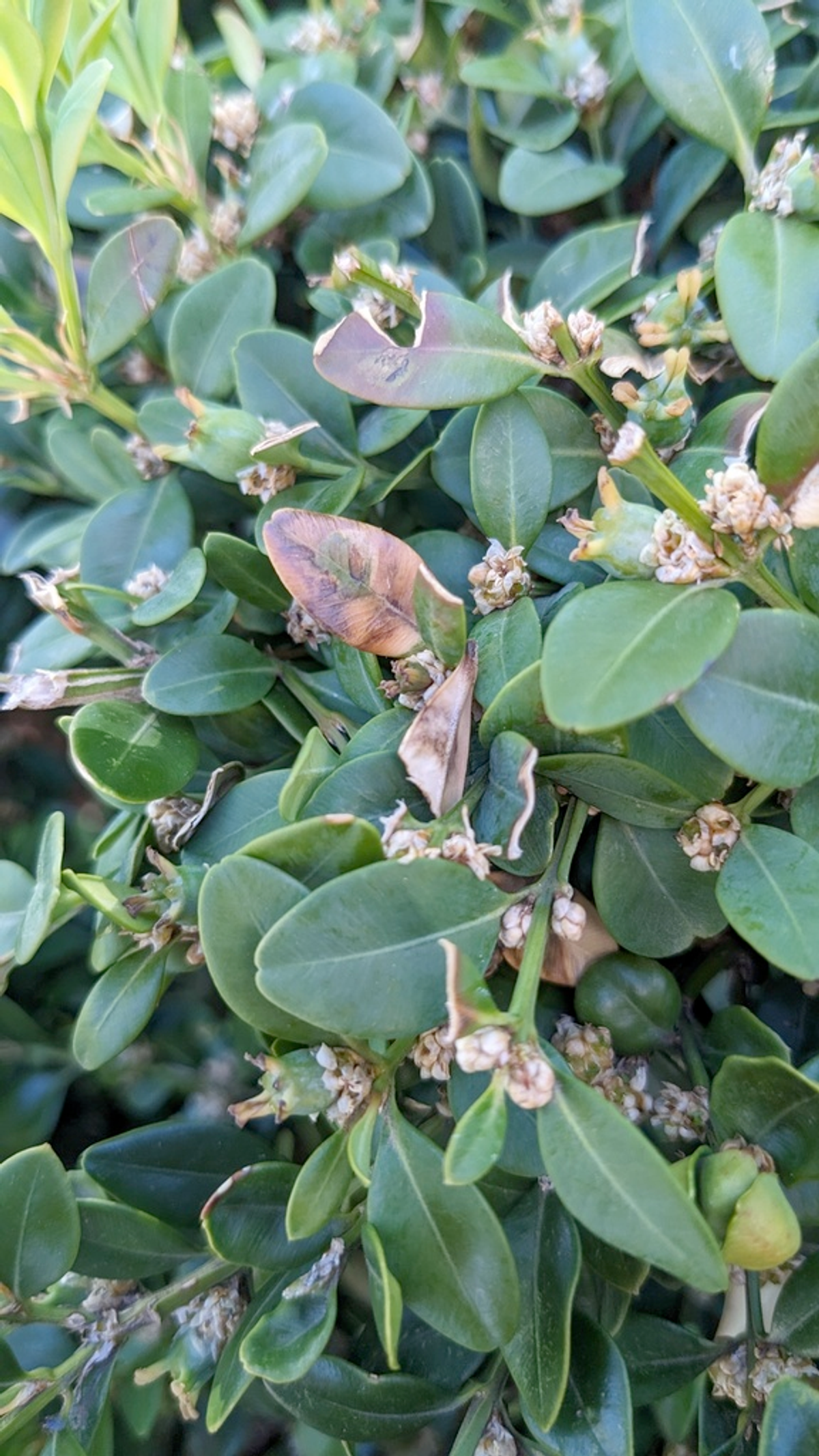
Boxwood dieback is a fungal disease that causes stem cankers, leaf browning, and branch dieback, ultimately leading to the decline of affected shrubs. First reported in the U.S. in 2019, this disease spreads through water, contaminated tools, and infected plant debris, thriving in warm, humid conditions. Unlike boxwood blight, which rapidly defoliates shrubs, dieback disrupts water flow within the stems, causing gradual deterioration. Nursery owners and landscapers must regularly inspect boxwoods for symptoms, remove infected material, and isolate affected shrubs to prevent the disease from spreading to healthy stock.
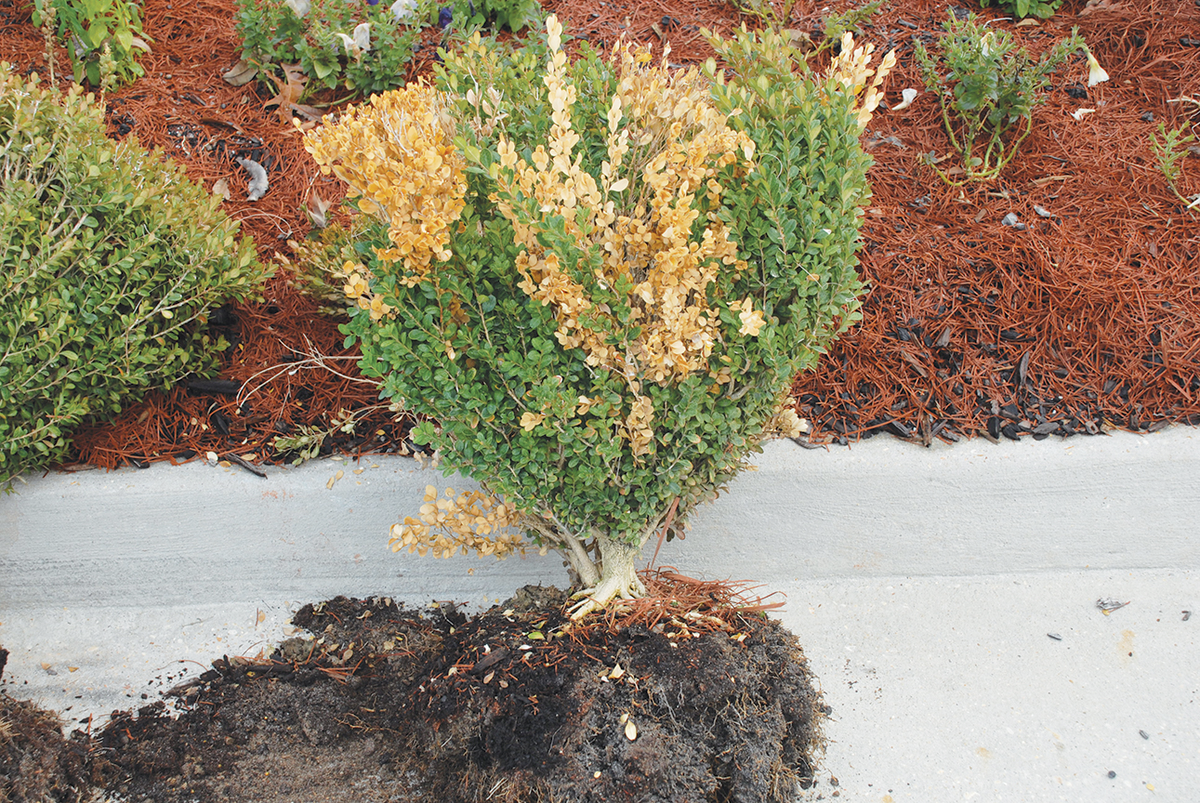
Beyond diseases and pests, boxwood plants are also sensitive to environmental factors. Extreme temperatures, drought conditions, and poor soil quality can all take a toll on these shrubs, making them less resilient and harder to maintain. If you’re considering boxwoods for your garden, it’s essential to be aware of these potential pitfalls and be prepared for the extra care they may require.
Meet Inkberry Holly: The Native Alternative to Boxwoods
Why settle for high-maintenance boxwoods when you can choose an alternative that’s just as attractive and far more beneficial for your yard and the environment? Enter Inkberry Holly - a tough, versatile shrub home to the Northeastern U.S. that checks all the boxes for beauty, resilience, and ecological value. Inkberry Holly thrives in various light conditions, from full sun to partial shade.
When planted, ensure the Inkberry Holly is at the correct depth and in well-drained soil to promote healthy growth and longevity.
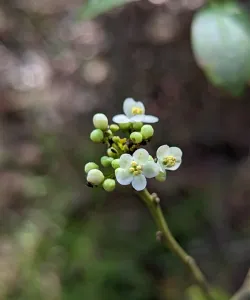
Inkberry is a dense, compact evergreen shrub that typically grows 5 to 8 feet tall at most. It features dark green, glossy leaves that hold their color throughout the year, providing a constant backdrop for other seasonal plantings. During the spring, small white flowers emerge, attracting pollinators such as bees and butterflies. These flowers give way to the plant’s namesake feature in the fall and winter: small, black berries that are a crucial food source for birds during the colder months. The berries contrast strikingly with the foliage, adding visual interest to the winter landscape. Inkberry thrives in full sun to part shade and prefers acidic, well-drained soils. It is often used in foundation plantings, hedges, and wetland borders due to its adaptability to wet conditions.
A Perfect Foundation Planting
Inkberry Holly is an excellent choice for foundation plantings, creating a clean, structured look that enhances any garden. Its glossy green foliage stays lush year-round, offering a polished aesthetic without the headaches that often come with boxwoods. The foliage comes in various shades of green, enhancing the visual appeal of foundation plantings. Plus, it blends effortlessly with other native plants, making it easy to build a balanced, thriving landscape.
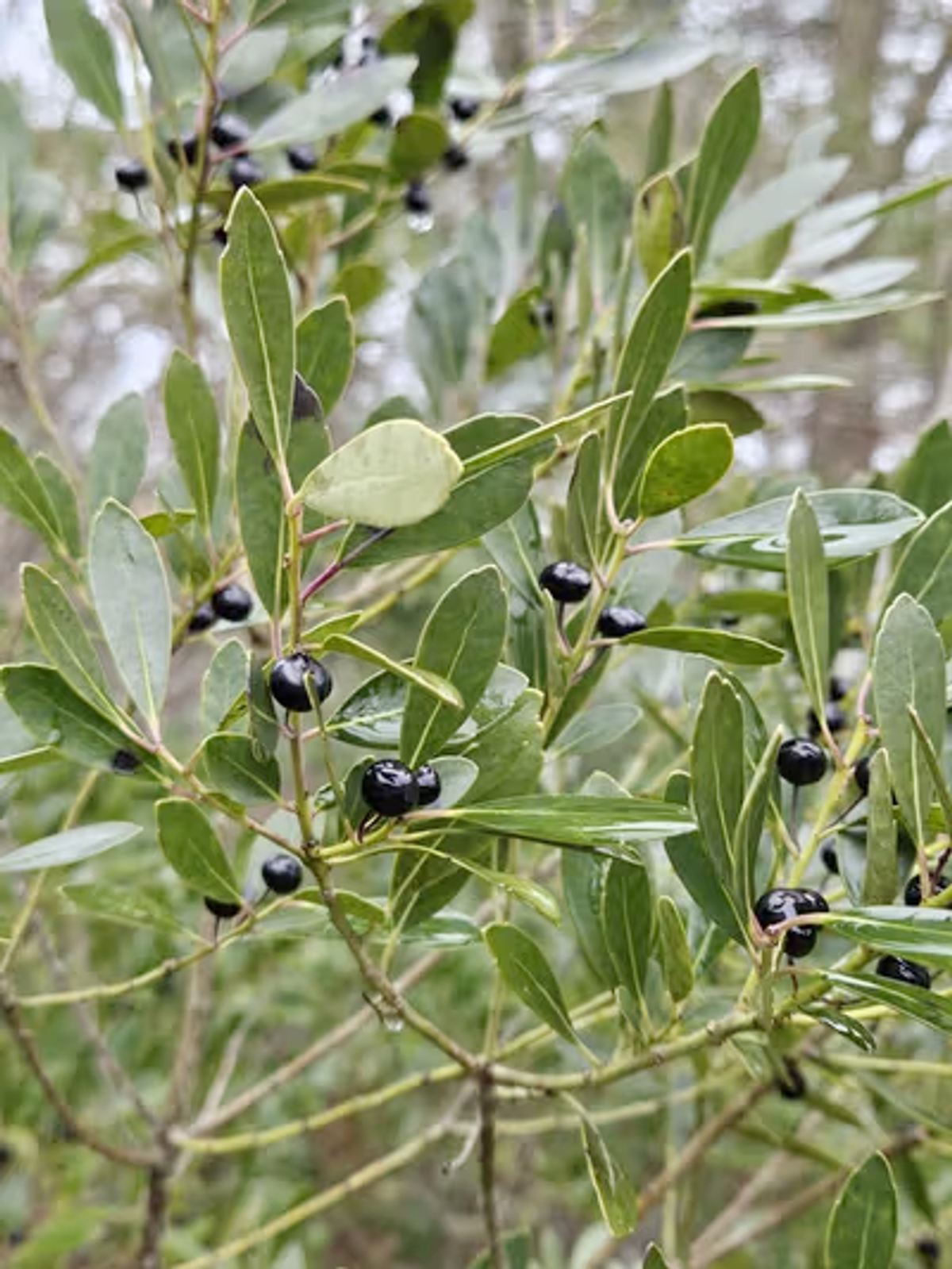
A Resilient Host Plant
Inkberry Holly adapts to nearly any setting. It flourishes in full sun or moderate shade, tolerates both wet and dry soil, and grows well in sandy or clay soils. Whether your yard is challenging or forgiving, this shrub can handle it.
Beyond its good looks, Inkberry Holly is a key player in supporting local ecosystems. Its small flowers attract a variety of beneficial pollinators, and it serves as a host plant for two stunning native butterflies—Henry’s Elfin and Holly Azure. Planting Inkberry means giving pollinators and butterflies a much-needed boost.


Unlike boxwoods, which are prone to blight and pest problems, Inkberry Holly is naturally resilient. You won’t have to constantly battle diseases or worry about harsh winters taking a toll. With minimal care, this shrub stays healthy and vibrant, season after season.
Inkberry Holly Varieties
While there are several varieties of inkberry holly, most are cultivated selections, except for Winterberry Holly, which is a closely related native species. Some popular options include:
- Compacta – A compact, dwarf variety that reaches about 3-4 feet tall, making it ideal for smaller spaces.
- Nana – A smaller, dense variety growing to around 2-3 feet, perfect for low hedges or borders.
- Shamrock – Recognized for its bright green, variegated leaves, adding a splash of color to any garden.
- Winterberry – Unlike the cultivated varieties above, Winterberry Holly (Ilex verticillata) is a native relative of inkberry, producing striking red berries that last through winter, providing seasonal interest and food for wildlife.
Each of these selections offers unique characteristics in size, foliage, and berry production, allowing you to choose the best fit for your landscape.
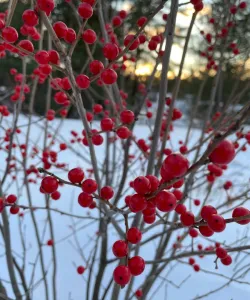
Winterberry Holly is truly a standout shrub as both a beautiful ornamental and powerful, year-round wildlife supporter. Growing 3 to 12 feet tall depending on the variety, Winterberry Holly blooms with small white flowers in spring, which are relatively inconspicuous compared to the clusters of bright red berries that form and persist long after its leaves have fallen. Winterberry Holly thrives in full sun to partial shade and prefers very moist, acidic soils, making it ideal for wetland borders, rain gardens, or as a focal point in winter garden settings.
As a special note: Winterberry Holly is dioecious, meaning both male and female plants are needed for fruit production - be sure to find at least one of each and plant them within 50 feet of each other for berry production (one male plant can support berry production of several female plants).
Pruning and Maintenance
Inkberry holly needs to be pruned regularly to maintain its shape and promote new growth. Here are some tips for pruning and maintaining your inkberry holly:
- Timing: Prune in late winter or early spring, before new growth begins.
- Removing Dead Wood: Remove any dead or damaged branches to keep the plant healthy.
- Shaping: Cut back overgrown branches to maintain shape and encourage new growth.
- Thinning: Thin out the center of the plant to allow for good air circulation and sunlight penetration.
By pruning and maintaining your inkberry holly regularly, you’ll be able to keep it healthy and looking its best, ensuring it remains a standout feature in your garden.
Designing with Inkberry Holly
Inkberry holly isn’t just another evergreen—it’s a low-maintenance, adaptable, and visually striking addition to any yard. Whether you’re aiming for structure, privacy, or a naturalistic garden, this versatile shrub fits effortlessly into various landscape styles. Here’s how to make the most of it:
- Natural Privacy Screens & Hedges – Create a dense, evergreen hedge that offers year-round privacy and wind protection. Unlike boxwood, inkberry holly doesn’t suffer from blight or pest issues, making it a reliable choice for a long-lasting, healthy barrier.
- Foundation Plantings with Depth & Texture – Its compact, rounded form makes inkberry holly perfect for framing your home’s exterior. Plant it just to the top of the root ball to prevent planting depth issues and ensure strong root development. Pair it with flowering perennials or grasses to add contrast and soften hardscapes. Inkberry Holly can also be paired with other shrubs to create a diverse and visually appealing landscape.
- Striking Specimen Plants – Use inkberry holly as a standalone focal point in your landscape. Its lush, dark green foliage remains vibrant all year, while some varieties develop deep purple or bronze hues in winter, adding seasonal interest.
- Diverse & Wildlife-Friendly Plant Combinations – Inkberry holly thrives when paired with native plants like hydrangea, winterberry, or fothergilla, creating a biodiverse, pollinator-friendly garden. The small white flowers attract bees and butterflies in spring, while its berries support local bird populations in winter.
By incorporating inkberry holly into your garden design, you’ll enjoy a resilient, visually appealing, and ecologically beneficial landscape that thrives in every season—without the headaches of high-maintenance shrubs.
Conclusion
Inkberry holly is a low-maintenance, versatile plant that can add beauty and functionality to your landscape. By choosing healthy plants, providing proper care, and pruning and maintaining regularly, you’ll be able to enjoy the benefits of inkberry holly for years to come. Whether you’re looking to create a hedge, foundation planting, or specimen plant, inkberry holly is a great choice for any landscape design.
Ready to transform your outdoor space? Our team can build you a custom garden design that includes Inkberry Holly and other native plants suited to your region. Additionally, explore My Home Park’s plant glossary to learn more about how Inkberry Holly and other native species can fit into your personalized landscape plan.

Share this article


